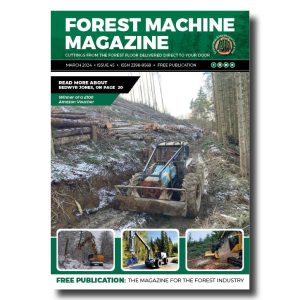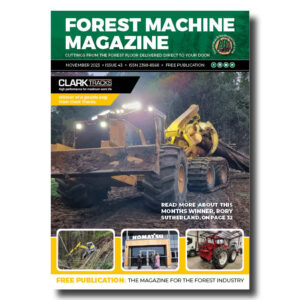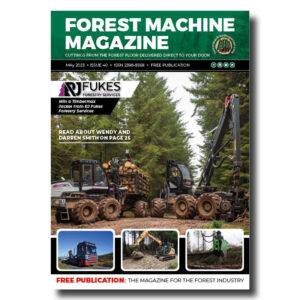Growing Stronger Pine Forests: Insights from a 27-Year Study
In the southeastern United States, pine Forests serve as critical components of the forestry economy, predominantly managed through intensive site preparation techniques designed to enhance tree growth and accelerate harvest cycles.

-
That’s a remarkable amount of work hours for a single machine, the Norcar 600 owned by Erkki Rinne is taken well care of, it even has the original Diesel engine.
-
Kieran Anders is a forestry contractor working in the lake district. His work involves hand cutting and extracting timber using a skidder and tractor-trailer forwarder.
-
It is not possible to eliminate chain shot, but there are simple steps that can be taken to reduce the risk.
-
Arwel takes great pride in the fact that the mill has no waste whatsoever, “the peelings are used for children’s playgrounds, gardens and for farm animals in barns in the winter and the sawdust has multiple uses in gardens and farms as well.
-
Timber hauliers need to encourage young blood in, and also look after the hauliers we have, we need make the sector a safe and positive place to work.
FIND US ON
These plantations often employ soil bed construction to improve drainage and the application of herbicides to mitigate competition from weeds and woody shrubs. While earlier studies have documented that such interventions yield promising early growth in pine species such as slash pine (Pinus elliottii) and loblolly pine (Pinus taeda), the long-term efficacy of these practices remains ambiguous, necessitating comprehensive longitudinal research to unravel their sustained impact on forest productivity.
Addressing this knowledge gap, a recent extensive study conducted in the Lower Coastal Plain of North Florida monitored pine plantations for up to 27 years, offering unprecedented insights into how various site preparation strategies influence extended growth trajectories and timber yield. The research, published in the peer-reviewed journal Forest Ecosystems, meticulously examines the interplay between bed construction timing, the intensity of bedding passes, and herbicide application schedules, providing forest managers with evidence-based recommendations that optimize long-term productivity.
The investigative team, based at the University of Georgia, structured their experimental design to compare the outcomes of multiple treatment variables: early bedding versus late bedding, single-pass bedding against double-pass bedding, and pre-plant herbicide applications as opposed to post-plant applications. This multi-factorial approach enabled a robust evaluation of formulations balancing physical soil modifications and chemical vegetation control measures, with a focus on discerning which combinations demonstrably sustain superior tree growth over nearly three decades.
Crucially, the data revealed that two-pass bedding treatments consistently surpassed the efficacy of single-pass or no bedding strategies in promoting tree growth, underscoring the importance of soil manipulation intensity. The improved outcomes were closely correlated with enhanced vegetation control efficacy, particularly regarding the suppression of woody shrub competitors, which otherwise pose long-term allelopathic and resource competition challenges to young pine stands. These findings validate the notion that robust mechanical site preparation is foundational to silvicultural success.
Enterprise-scale observations further highlighted the critical influence of herbicide application patterns. The study noted significant growth advantages when herbicide was broadcast uniformly across the entire plot area rather than confined to banded applications directly over soil beds. This suggests that controlling woody and herbaceous competition comprehensively rather than selectively is paramount, as residual vegetation between bedding rows may undermine early structural interventions if left unmanaged.
Site-specific responses to bedding timing illuminated the nuanced relationship between silvicultural technique and local environmental variables. Although the impact of bed construction timing was less pronounced than herbicide treatment effects, early bedding coupled with pre-plant herbicide application emerged as the optimal strategy within the Florida flatwoods ecosystem. This synergy enhances early vegetation control, reduces competition, and provides a conducive microenvironment for root establishment and tree growth.
However, the study also identifies complexities in managing competing vegetation, noting that while double bedding suppresses woody plants more effectively, it may inadvertently encourage the proliferation of herbaceous weeds. This secondary effect necessitates additional integrated weed management steps post-bedding to retain the benefits of intensive site preparation, emphasizing a holistic approach rather than relying solely on mechanical or chemical tactics
Source:bioengineer.org
Sign up for our free monthly newsletter here
Contact forestmachinemagazine@mail.com to get your products and services seen on the world’s largest professional forestry online news network.
#homeoflogging #writtenbyloggersforloggers #loggingallovertheworld
Written by loggers for loggers and dedicated solely to the equipment used in forestry operations.







